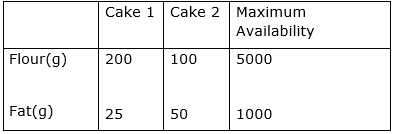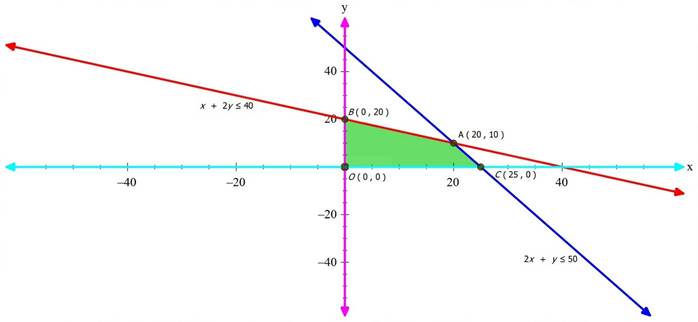One kind of cake requires 200 g of flour and 25 g of fat, and another kind of cake requires 100 g of flour and 50 g of fat. Find the maximum number of cakes which can be made from 5 kg of flour and 1 kg of fat assuming that there is no shortage of the other ingredients used in making the cakes.
The above information can be expressed in the form of the following table:

Let the number of Cake 1 and Cake 2 be made be ‘x’ and ‘y’
Number of cakes made = x + y
Now,
⟹ 200x + 100y ≤ 5000
i.e. the maximum flour available for both the cakes combined is 5000g, each of which requires 200g and 100g of flour respectively.
⟹ 25x + 50y ≤ 1000
i.e. the maximum fat available for the two cakes combined is 1000g, each of which requires 25g and 50g of fat respectively.
Hence, the mathematical formulation of the LPP is as follows:
Find ‘x’ and ‘y’ that:
Maximises Z = x + y
Subject to the following constraints:
(i) 200x + 100y ≤ 5000
i.e. 2x + y ≤ 50
(ii) 25x + 50y ≤ 1000
i.e. x + 2y ≤ 40
(iii) x,y ≥ 0 (∵ quantity cant be negative)

The feasible region is bounded (OBAC)
The corner points of the feasible region is as follows:

Z is maximised at A(20,10)
The maximum number of cakes that can be made are 30.